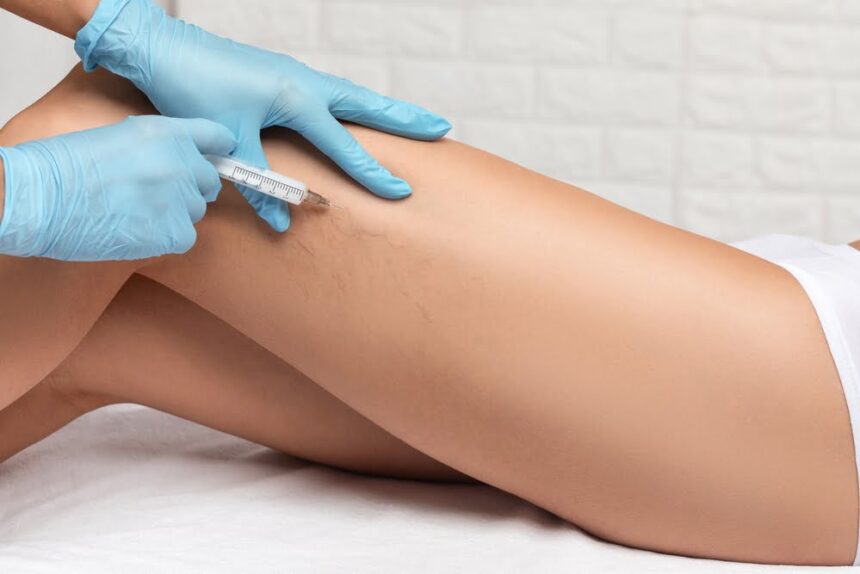Foam sclerotherapy is a minimally invasive technique for eliminating varicose veins and spider veins. If you suffer from unsightly veins, this type of treatment is likely to be a preferable option to surgery and general anaesthesia. But what are the other advantages to foam sclerotherapy and how long will it take to recover?
Advantages of foam sclerotherapy
There is a reason that non-invasive cosmetic surgeries are becoming more common. No one wants to undergo invasive surgery unnecessarily, so a key advantage to sclerotherapy is the fact that it is a non-invasive treatment.
If you live in New Jersey, you may want to consider a vein doctor in New Jersey to discuss this option and other treatments available.
There are, however, several other benefits to choosing this option to treat your varicose veins. This includes the following:
- The results are more reliable compared to other types of treatment – the foam-like structure of the solution used in this treatment plays a key role in boosting its effectiveness, as it facilitates much greater contact within the vessel walls that are being treated.
- Larger veins can be treated more successfully – particularly when compared to liquid sclerotherapy which is injected into the vein as-is, in contrast to foam which is mixed with air and developed into a creamy texture. This texture makes it more ideal for treating larger veins compared to regular sclerotherapy.
- Relief from discomfort is likely to be quicker – if varicose veins are a cause of discomfort for you, you are likely to find that foam sclerotherapy will help to quickly alleviate the itching, burning and heaviness that are often associated to the condition. Whilst it will take time to fully recover from the treatment, you will notice that these symptoms will continue to regress as the veins disappear.
- Imaging technology can be deployed alongside the treatment – the foam sclerosing agent has a different density to blood meaning it is far easier to deploy imaging technology to assess how well the treatment is going. If you decide to go-ahead with foam sclerotherapy to treat your veins, be sure to check with your chosen clinician to see if they provide this technology as part of their service.
- Little time off work is required – this type of treatment is performed entirely as an outpatient, meaning you can have it done leave and be back to work the following day.
Disadvantages of foam sclerotherapy
“One of the arguments against foam sclerotherapy is that there is evidence that a small proportion (5%) of patients undergoing foam sclerotherapy may require a second (or rarely third) procedure to fully treat the main truncal vein” says Jamie Barwell at Southwest Veins, a vascular surgeon who has treated over 1000 patients with varicose veins problems.
Jamie and others like him in the industry also advise on the following disadvantages:
- Usually on one leg is treated at each treatment session – due to the volume of foam that can be safely used in one session, it’s recommended to treat each leg separately.
- Clinic attendance will be required more than once – potentially, you may need to visit your clinician three or four times, particularly if you are having both legs treated.
- The anticipated outcome may take longer to materialise – but is likely to be much more satisfactory compared to other techniques. There is likely to be some bruising and uncomfortable lumpiness, but it will fade completely, eventually.
- Brown skin may take a long time to fade – potentially there could be some discolouration of the skin up to a year after the treatment. Other types of treatment can also cause this discolouration; however, it is more frequently associated to foam sclerotherapy.
Recovering from foam sclerotherapy treatment
Following your treatment, a firm bandage will be applied to the leg which you will need to wear continuously until your next appointment. Whilst avoiding vigorous exercise is recommended initially, you should try to get active again as soon as possible. This includes taking walks, going to work, and conducting other light activities.
You are likely to experience some bruising and lumpiness following treatment and the best course of action for that is to take an anti-inflammatory medicine such as ibuprofen. There is the possibility of rarer complications such as deep vein thrombosis, ulcers at the site of injection and allergies to the foam. If you are concerned by this, you should speak to your foam sclerotherapy clinician before undertaking the procedure.

